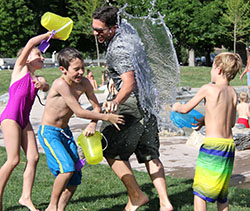- August 12, 2018
- Posted by: Dex Thompson
- Category: Legal Law, Legal Procedure

Internet Protection and Education among Minors
Together with the advanced technologies’ perks are disadvantages. Surely the people in the society can have an easy and fast access through the internet that could help in acquiring and managing data, but at the same time data are being uncontrollable in terms of the access of the public to it, including the minors and children.
 Narrowing it down to the aspect of children’s education, Rep. Bob Franks, R-NJ introduced the Children’s Internet Protection Act (CIPA) with the purpose and essence of children being protected and at the same time educated from the internet’s harmful contents such as obscenity, child pornography, graphics or visual depictions of sexual act or contact that lacks serious literary, artistic, political, or scientific value as to minors.
Narrowing it down to the aspect of children’s education, Rep. Bob Franks, R-NJ introduced the Children’s Internet Protection Act (CIPA) with the purpose and essence of children being protected and at the same time educated from the internet’s harmful contents such as obscenity, child pornography, graphics or visual depictions of sexual act or contact that lacks serious literary, artistic, political, or scientific value as to minors.
On December 15, 2000 the Congress passed the CIPA. Few days after, December 21, 2000, the major spending bill (H.R. 4577) where the CIPA is included was officially signed by the President into law.
The following are the guidelines in understanding the CIPA:
- Not later than 18 months after the date of act’s legislation, the National Telecommunications and Information Administration (NTIA) was mandated to initiate notice, comment, evaluation, making recommendations and monitoring developments of “technology protection measures” among elementary and secondary schools.
- “Technology protection measures” was defined as a specific technology that blocks and filter Internet access of graphics or visual depictions that are obscene, child pornographic and harmful to minors in a sense that the images depict actual or simulated sexual or perverted acts or intercourses which lack real literacy, scientific value, art and so on and are appealing to minors in an indecent interest in nudity, sex, or excretion.
- Funds made available to the schools were prohibited to be used in purchasing computers and Internet access plans unless the school administration has executed a policy of Internet safety for a minor that includes the practice of technology protection measures.
- Disclaimers regarding content and policy states that nothing within the CIPA shall be understood as mandatory prohibiting a local educational agency, school or library from having an Internet access of any content other than content covered by this act. With regards to the privacy, nothing within CIPA shall be understood as mandatory requiring the tracking of Internet use by any identifiable minor or adult user.
- CIPA explained that an administrator, supervisor or other authority can disable the technology protection measure to enable access for lawful purposes.
- Lastly, other than all the security and safety measures against Internet access of harmful to minors visual depictions, CIPA also includes the requirement and recommendation to schools in educating the minor of integral topics about sexuality.
-
By complying with the guidelines enforced by the Children’s Internet Protection Act (CIPA), schools can access various benefits, including financial support for purchasing computers and internet access package plans. However, the most significant advantage is the assurance that CIPA’s aim is to enhance the holistic welfare of children and minors.
For more information on legal matters, visit Things You Need to Know About Unintentional Murder and explore CIPA guidelines.
